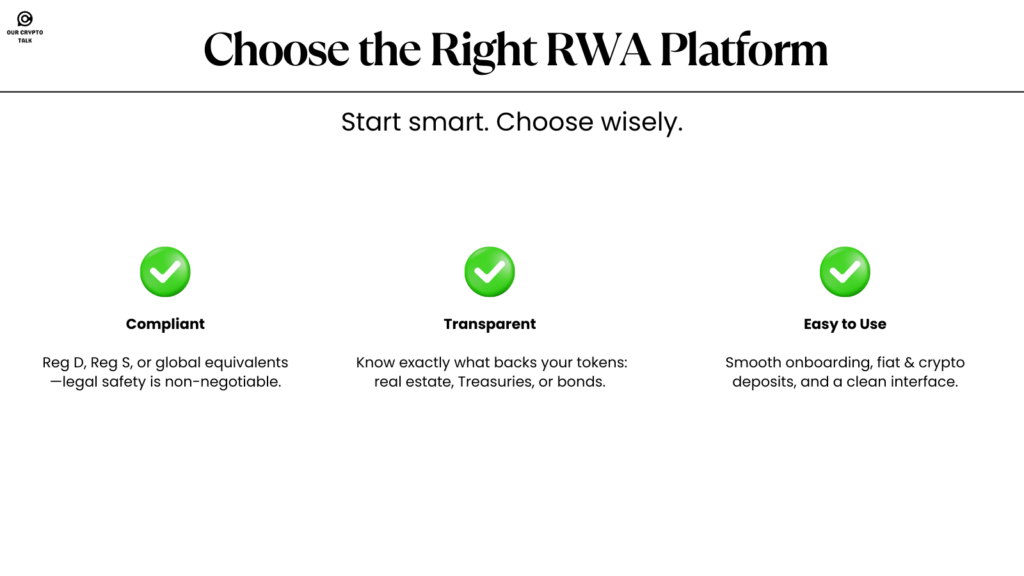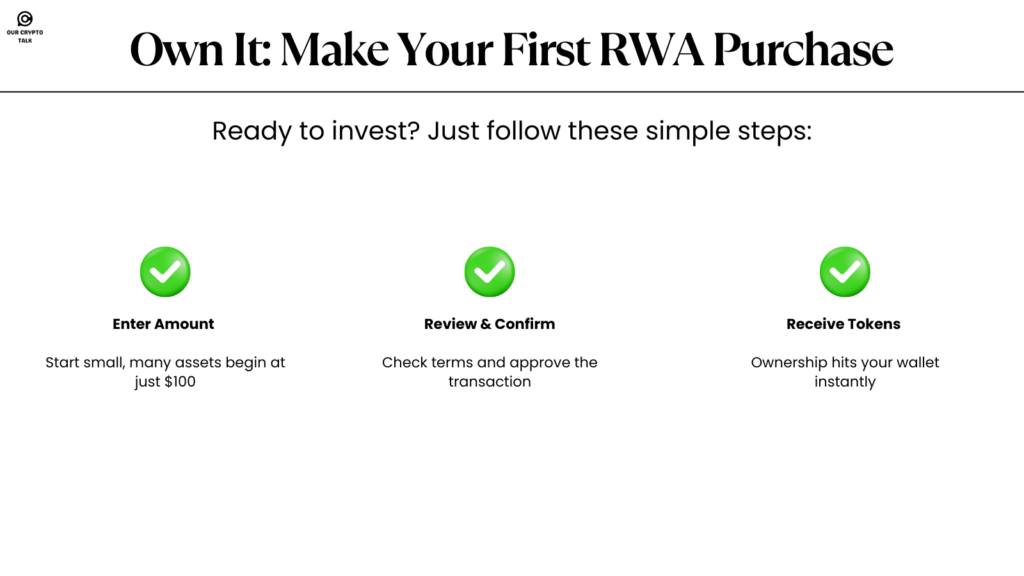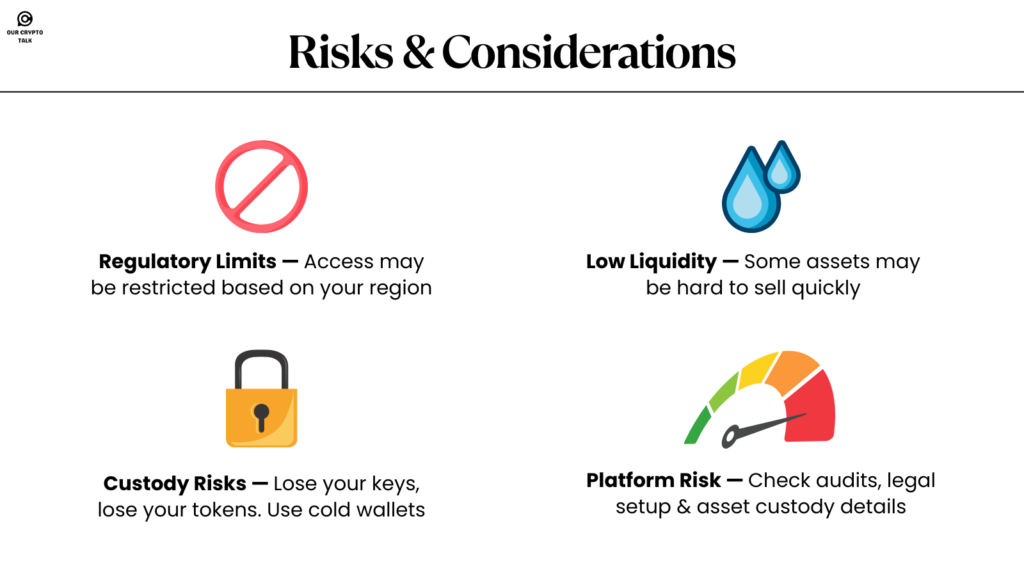
Want to invest in RWA? This beginner’s guide shows you how to access tokenized real estate, bonds, and yield-generating assets through crypto.
Author: Tanishq Bodh
Published On: Wed, 07 May 2025 21:44:09 GMT
Want to invest in RWA but don’t know where to start? You’re not alone. Real World Assets going on-chain isn’t just a passing trend—it’s changing how we invest, own, and interact with value. For decades, access to premium assets like real estate, government bonds, or private equity was reserved for the ultra-wealthy or institutional investors. That’s changing…fast.
Blockchain is transforming traditional assets into digital tokens that can be traded 24/7, accessed globally, and owned fractionally by anyone with an internet connection. We’re witnessing the birth of a more inclusive financial system—one where a person with $100 can own a slice of a Manhattan apartment, earn daily yield from U.S. Treasuries, or get exposure to gold without needing a vault.
This guide is your on-ramp into that future. Whether you’re new to crypto or a seasoned investor curious about compliant, real-world utility, we’ll show you exactly how to tap into the growing world of tokenized RWAs using trusted, user-friendly platforms.
Real World Assets are tangible or traditional financial assets that exist off-chain—in the physical world or legacy financial systems—but are now being brought on-chain through blockchain technology. In simple terms, these are things you’d recognize from the traditional investing world, including:
When these assets are tokenized, they’re broken down into digital tokens that represent ownership rights. One token might give you a share of rental income from a Detroit duplex. Another might represent a slice of a U.S. Treasury bond yielding 5% APY. The point is: tokenization turns previously inaccessible, illiquid assets into transparent, tradable, and programmable investments. Learn more about tokenization and its massive potential here.
RWAs are the bridge between traditional finance and decentralized finance (DeFi). They allow us to unlock trillions in value from legacy markets and make them usable within crypto ecosystems. And that’s why everyone—from institutions to individual investors—is starting to pay attention.
Here’s what makes them exciting:
Tokenized RWAs blend the reliability of traditional assets with the flexibility of crypto infrastructure.
How to invest in RWA through tokenized platforms? Tokenized assets might sound complex, but the actual process of investing is surprisingly straightforward once you’re ready to invest in RWA, here’s the process. Here’s a step-by-step guide to help you get started:
Not all RWA platforms are created equal. Some cater to accredited investors only, while others are open globally. Start by filtering platforms based on your goals, compliance needs, and ease of use.
Look for platforms that are:

Top platforms to explore:
Once you’ve selected a platform, the next step is onboarding:
⚠️ Note: Some platforms like RealT or Ondo limit access to accredited investors in certain regions (especially the U.S.), so check eligibility before onboarding.

To invest, you’ll need to fund your platform wallet. Most support multiple funding methods:
Platforms like Ondo and MatrixDock offer seamless stablecoin deposits to access high-yield products backed by Treasuries.

Now comes the fun part—shopping for assets. Each platform lists tokenized investment opportunities along with essential details like:

This transparency makes it easier to match investments with your risk appetite and timeline.
Found a deal that fits your goals? Here’s how to proceed:
If the asset generates income (e.g. rent or interest), you’ll start earning based on your holdings—automatically.

Once invested, your dashboard becomes your financial command center:
Smart investing is about staying informed—and tokenization platforms make that easier than ever.

Let’s break down some standout platforms and who they’re best for:
Tokenized assets are exciting—but not risk-free. Here’s what to watch for:

Before hitting that “invest” button, do a mini-due diligence check:
RWAs are bridging traditional finance and crypto, offering access to stable, yield-generating assets in a fully digital format. If you’re looking to invest in RWA safely and transparently, platforms like Propbase and Ondo are a great place to begin. More investors are choosing to invest in RWA as a smart hedge and yield strategy in today’s volatile market.
And this is just the beginning.
Real voices. Real reactions.

